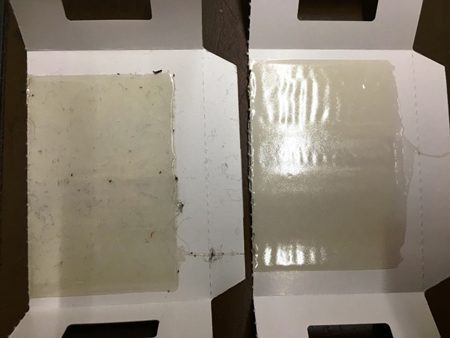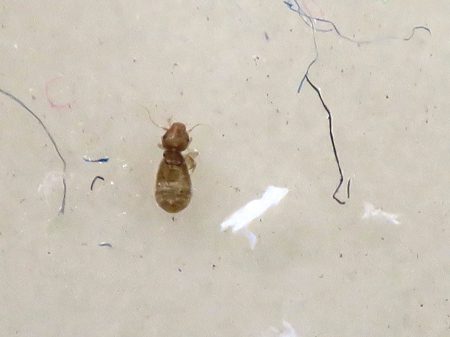Just as it’s impossible to keep insects out of our homes, it’s impossible to keep them from entering museums as well. While insects in general are not harmful to humans, many of them can severely damage the very collections that museums seek to preserve. In order to prevent this, many museums, including CHM, have instituted Integrated Pest Management (IPM) programs. IPM takes a holistic approach at controlling and eliminating the presence of pests in the museum, considering the entire museum environment, the management and use of the artifacts, and the diverse activities that occur within the building to implement successful pest management strategies.

Britta Keller Arendt, senior collection manager and IPM coordinator, commences her weekly inspection of pest traps throughout the Museum. All images by CHM staff
While a team effort, our senior collection manager serves as the IPM coordinator for collections, monitoring pest activity throughout collections storage and gallery spaces on a weekly basis. Like many museums, CHM uses blunder traps, which are called that because they rely on bugs making the blunder of venturing onto a sticky glue surface. These traps are strategically placed throughout the building, capturing whatever happens to be crawling in a certain area, providing the IPM coordinator with an excellent indication of what types of insects are present and active in different museum spaces.

Inside two blunder traps: left, a collected trap with evidence of pest activity, and right, a fresh trap to replace the old one.
When each trap is collected, a fresh one replaces its spot on the floor, and the identification process begins. With the help of a microscope, the IPM coordinator records the various species found on each trap, the number of each species, and stage in the life cycle (egg, larva, pupa, or adult). If potential issues are discovered, such as an abnormally large number of larvae of a species that’s known to damage specific collections, then the IPM coordinator will collaborate with CHM conservators and properties staff to develop and implement an appropriate plan of action.

Britta examines a blunder trap under the microscope in the conservation lab.

An adult booklouse inside a blunder trap. These tiny insects enjoy eating microscopic mold found inside books where there has been a previous humidity issue.
Aside from monitoring insect activity throughout the Museum, the IPM program seeks to maintain an environment that is inhospitable to pests through proper housekeeping and sanitation efforts. This includes enforcing a strict “no drinks or food” policy in collections storage spaces, encouraging all Museum staff to limit the amount of food kept in office spaces, and asking everyone to have their trash cans emptied daily. Collections staff also share the responsibility of routine maintenance of artifacts on exhibition and in storage, as well as monitoring temperature and humidity levels throughout the building. Finally, all incoming artifacts are thoroughly examined by collections and conservation staff for potential pest activity before they can be processed and moved into more permanent storage within the museum.
As you can see, IPM is a collaborative effort, so the next time you visit CHM, help us out by leaving your drinks and food at home or in the Museum café!
Find out more about how museums manage pests
Britta Keller Arendt is the senior collection manager and bug wrangler Integrated Pest Management coordinator at the Chicago History Museum.